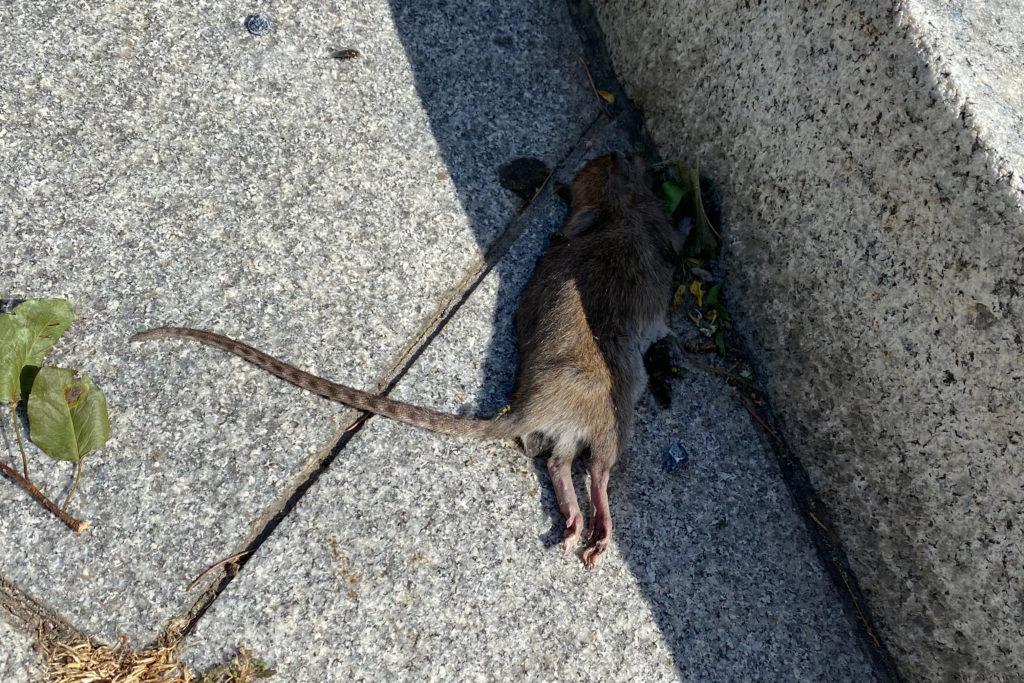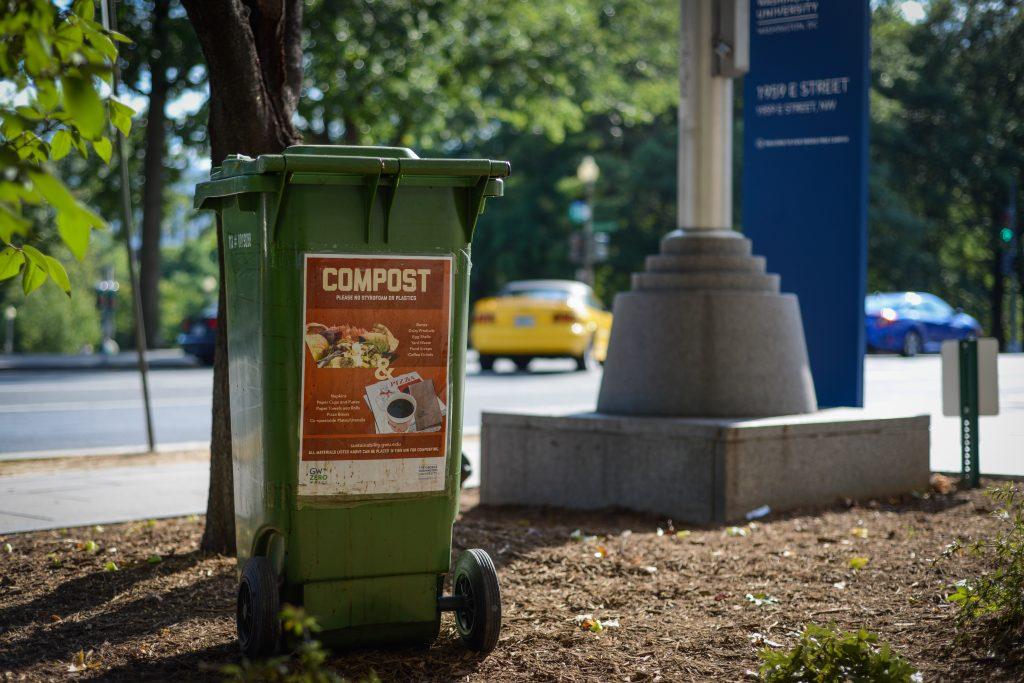It’s a real-life version of Whac-a-Mole, but instead of using ludicrously large hammers to smash moles, D.C. officials are laying down the poison to control the rats.
DC Health officials, residents and reporters gathered Friday for a “rodent walk” to learn tips from extermination experts on controlling the vermin, who said are roaming through the streets of D.C. in growing numbers. DC Health Program Manager of Rodents and Vector Control Gerard Brown and department employees are trying to slaughter the District’s growing rat population by laying poison on the rodents’ doorsteps, which officials said are usually holes in the ground.
Brown led rodent walk attendees down a street to a fenced-off patch of grass with several dumpsters, the crime scene for D.C. rodent control employees. He said the patch – which contained multiple holes in the soil – is primed for rat infestation since the dumpsters are located directly adjacent to an apartment building.
Hiding beneath these holes are burrows, a network of interconnected underground tunnels linked with many entry and exit points, which appeared to be a headache for the DC Health workers attempting to exterminate the rodents.
A pest control employee injected DITRAC tracking powder into one hole using his tools, causing a rat to jump out and dash furiously toward a crowd of spectators. Pest control employees said the rat was attempting to evade the powder, which sticks to their fur and they ingest when they groom themselves, which causes them to experience an internal hemorrhage and die within 14 days.
Soon after, another employee inserted a black tube connected to a machine on a small truck into the burrow. After the machine turned on, the tube began delivering carbon monoxide into the hole. Pest control workers began to cover the holes with dirt as the monoxide filled the burrows, intending to suffocate the unfortunate rodents below.
Just as the team of DC Health workers wrapped up their work, a rat appeared out of a previously unsupervised hole. As employees began to descend on this poor rat, the hapless creature scurried into an adjacent dumpster.
“You can see the rat has white powder on its fur,” one rodent control employee said. “It will die in 14 days.”
Brown said the District’s rodent population has grown increasingly worse each year. D.C.’s rat complaints skyrocketed in 2022, and this year is expected to be much worse, Brown said.
Pest-control company Orkin ranked D.C. the fourth-rattiest city in the United States in October, placing the District behind Chicago, New York and Los Angeles.
DC Health reported 13,373 rat-related service requests in 2022, and the department has already received 6,141 service requests this year, according to DC Health data.
Ward 1, which includes Adams Morgan and Columbia Heights, received the most rodent-related service requests in 2022 with 2,905 requests. Ward 2, which includes Foggy Bottom, ranked fourth for most rat-related requests in 2022, receiving 1,880 requests last year, per data collected by the department.
Brown said the increase of rats during the pandemic is correlated with a growing number of people working remotely from home, which coincides with an increasing amount of residential waste. He said UberEats and other food delivery services also led to increases in rodents.
Brown said during the pandemic, rats luxuriated themselves in residential garbage disposals, where people threw away unfinished food, instead of going to their typical hunting ground of restaurant back alleys.
Brown said the increase in rats will cause property damage and the potential transmission of disease.
Brown said residents should call 311 to file a rodent complaint, which the department will investigate via inspection within three days of the complaint’s filing, and return and reassess 14 days later to see if any additional action is necessary. He said the department only conducts rodent control via 311 requests outside of properties and recommended residents call licensed pest control for interior complaints.
He added that officials will be conducting “Rodents Academy” in the University Student Center from June 14 to 15 – a course for those interested in rat extermination.
Rats are particularly active during autumn and late summer, when they gather and store as much as food as possible before hibernating in the winter. Extermination experts warned D.C. residents of the prospect of growing rat numbers following the spring 2021 return of Brood X – a periodical group of cicadas that hibernate for most of their life and emerge every 17 years. Rats feast on the cicadas and typically experience an “explosion” of reproduction following the sudden surge of a plentiful food source.
The rodents are particularly attracted to moisture, dwelling in damp, cramped and dark areas. As rats become sexually mature after six weeks, a typical female rat could give birth to a litter of 14 pups and can become pregnant immediately giving birth.








